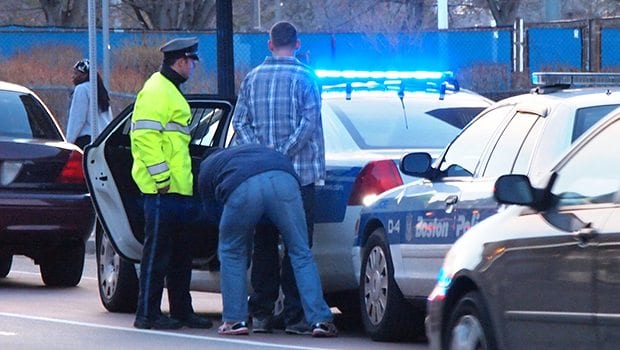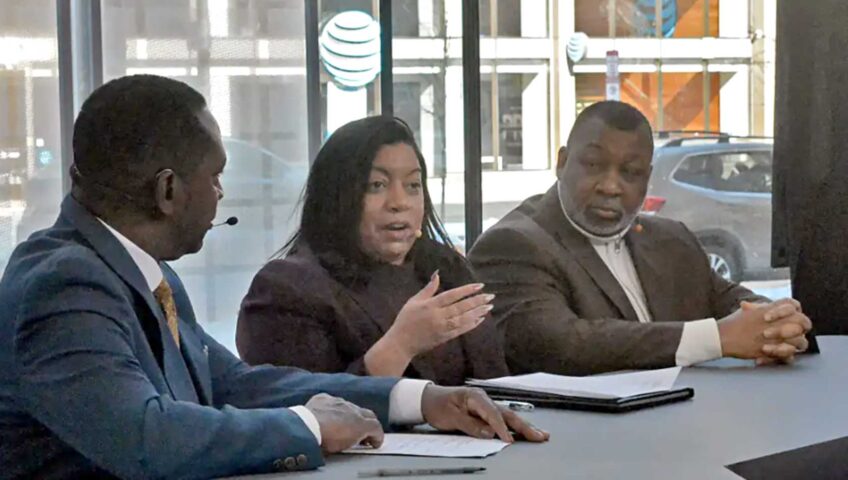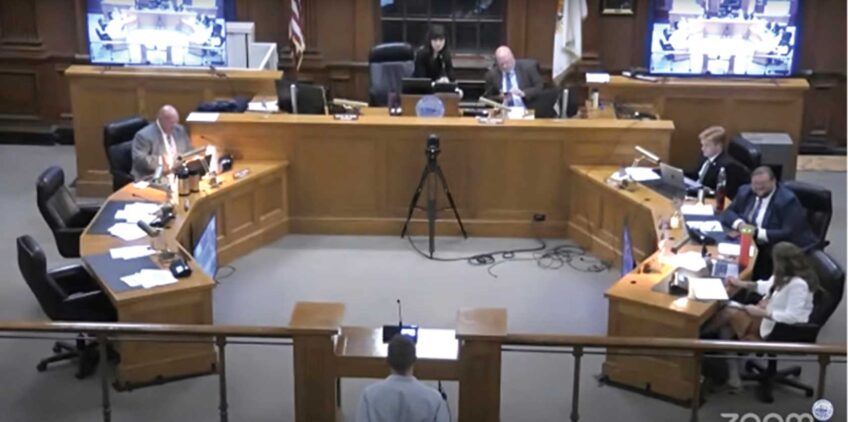
After the murder of George Floyd in 2020, and the racial justice protests it spurred, academics, politicians and activists have taken an increased interest in police interactions with civilians and how law enforcement differs between Black and white Americans. As part of that reckoning, Brooklyn-based research firm the Vera Justice Institute has come out with new data looking at interactions between police and drivers in Suffolk County, and new findings show racial disparities among non-traffic-safety stops throughout municipalities.
The 37-page report, written by Vera researchers Savannah Casteneda, Nicole Battle, Mona Sahaf and Seleeke Flingai uses data from the Suffolk County District Attorney’s Office from July 2020 to March 2022 to study racial disparities in the criminal legal system. Vera’s analysis revealed that Black drivers in Suffolk County have been pulled over for “non-traffic-safety” stops, which include violations like operating a vehicle with tinted windows, expired registration, improperly placed license plates, or objects hanging from a rearview mirror, at a rate almost two and a half times more than their white counterparts. This report shares findings from Vera’s analysis, along with proposed solutions that prohibit or deter such stops.
“We’re interested in looking into non-traffic-safety stops, because they’re an area very ripe for the tense stops, those stops that are normally for a very minor offense by policemen used to search for some more serious crime, which opens up diverse and very intrusive questioning, searching, frisking, and in certain cases can lead to, unfortunately, the death of divers,” Flingai said in a conversation with the Banner.
He pointed to the deaths of Philandro Castile and Daunte Wright at the hands of police officers —the first who was stopped because he allegedly matched the description of a robbery suspect and the second who was stopped for expired tags on his license and air fresheners hanging from the rearview mirror of his car.
The report looks at data for all the municipalities contained in Suffolk County including Boston, Chelsea, Revere and Winthrop. Notably, disparities in stops for both traffic and non-traffic violations between Black and white drivers were highest in Winthrop at nearly 8.1 times and 8.9 times respectively, followed by Boston, Revere then Chelsea.
Flingai was not able to explain the disparities between municipalities except to say that in some preliminary data, state police disparities are much smaller than municipal police — both of which are included in the final report.
“And so perhaps there’s this additional impetus and additional mandate in municipal police officers to also look into these more minor violations compared to state police, which are more dealing with people on highways and freeways and things of that sort,” he said.
In Boston, the BPD stopped Black drivers for non-traffic-safety reasons at exceedingly high rates in certain police districts. Vera researchers looked at four police districts — roughly covering the Back Bay, Fenway, and the South End; West Roxbury; Mattapan; and Hyde Park neighborhoods where a “substantial share of the traffic stops of Black drivers are for nontraffic-safety reasons.”
“For example, in Mattapan, 47 percent of stops against Black drivers are for non-traffic-safety reasons — the highest share across Boston’s police districts — compared to only 30 percent of stops of white drivers.” the report states. “This provides further evidence of a consistent pattern in which Black drivers are stopped far more often than white drivers for low-level violations that do not pose consistent safety risks to other drivers or pedestrians.”
Using this data, Vera researchers have made several policy recommendations they hope can reduce the disparities and prevent the criminalization of Black drivers and possible violent interactions with law enforcement.
Recommendations include city councils passing local ordinances preventing police from initiating a traffic stop for non-traffic-safety violations and ordinances to prevent police from pulling drivers over to arrest them on warrants for low-level offenses, such as failing to pay fines and fees or missing court dates for certain misdemeanor offenses. Additionally, Vera wants police departments to take it upon themselves to prioritize traffic violations over non-traffic stops.
Moreover, they hope that agencies presiding over law enforcement like the district attorney should introduce policies that create a presumption not to charge criminal cases that stem from non-traffic-safety stops or from consent searches when police lacked probable cause to conduct the search.
And as with the national movement to foster racial justice in law enforcement, Vera supports non-police actors getting involved in traffic and road safety to reduce interactions with armed police.
According to Flingai though, Vera’s biggest priority is calling attention to the top 15 non-traffic-safety violations that Black drivers have been pulled over for in Suffolk County and asking municipalities to reconsider how they are enforced. Those include using a motor vehicle without permission, tinted windows, license plate violations, light violations, registration problems and license problems.
According to the report, Black–white non-traffic-safety stop disparity would be cut nearly in half — a 46% decrease — if police did not make stops for these 15 violations.
“We wanted to provide that in the report so that we can have made very clear if you work with these 15 and eliminate them you can create drastic positive change,” Flingai said.
He noted that the institute is in the first stages of distributing the report to elected officials and other research groups and that he hopes the newly released data can make an impact on the safety of Suffolk County drivers.






